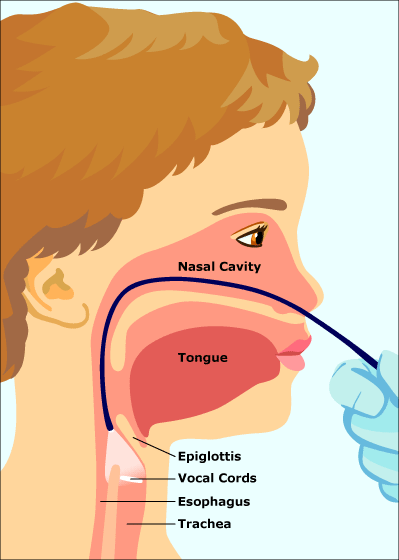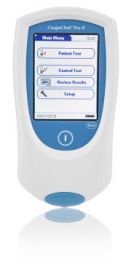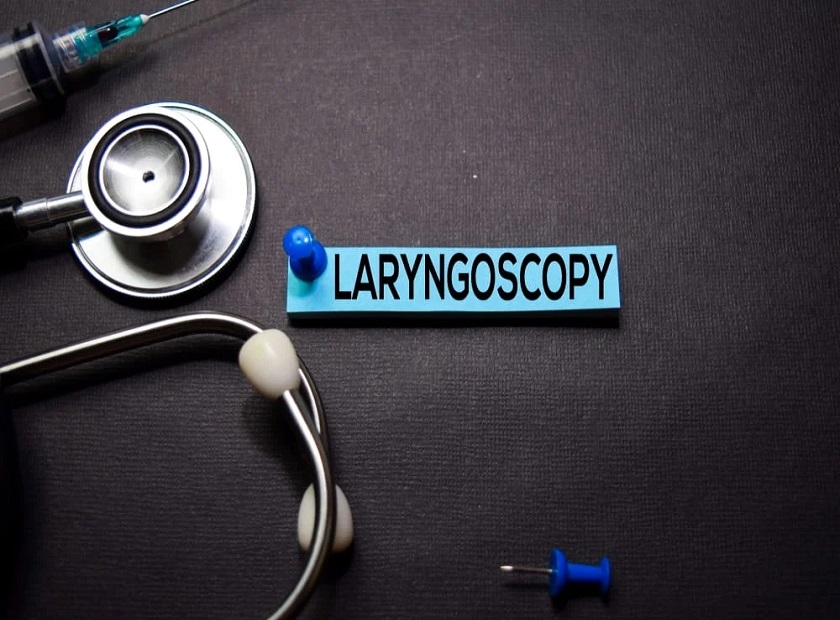Laryngoscopy – Overview, Purpose, Procedure, Types, And Complications
A laryngoscopy is an test that gives your doctor a close-up view of your larynx and throat. The larynx is your voice box. It’s located at the top of your windpipe, or trachea.
Remember that it is important to keep your larynx healthy because it contains your vocal folds, or cords. Air passing through your larynx and over the vocal folds causes them to vibrate and produce sound. This gives you the ability to speak.
A specialist known as an “ear, nose, and throat” (ENT) doctor will perform the test. During the test, your doctor place a small mirror into your throat, or insert a viewing instrument called a laryngoscope into your mouth. Sometimes, they’ll do both.

Who Should Undergo and Expected Results?
Your doctor may do it to find out why you have a sore throat that won’t go away or to diagnose an ongoing problem such as coughing, hoarseness, or bad breath. They also might do one when:
- You have something or the feeling of something stuck inside your throat
- You have laryngitis, whether acute or chronic laryngitis
- You have difficulty swallowing or breathing
- You have an earache that doesn't go away
- You have a chronic hoarseness
- You're coughing up blood
- The doctor has to examine something that could be an indication of something more serious like cancer
- The doctor has to remove a growth
- You have throat pain that doesn't go away
- You have long-term (chronic) cough
- You smoke and have a long-term respiratory problem
- You have bad breath that doesn't go away
- You have a mass in your neck or head area with signs of cancer
- You have voice problems lasting for over three weeks, including weak voice, hoarseness, no voice or raspy voice
Buy Heine Brand Products from AHP Medicals.
The doctor may perform a direct laryngoscopy to:
- Remove a tissue sample in the throat to exam it more closely under a microscope
- Remove something that's blocking your airway (i.e. a swallowed coin or marble)
What is a Laryngoscopy Procedure?
When you experience the mentioned conditions previously, then you should see your local specialist or a physician. The doctor will try to understand first by listening to what you have been experiencing and recommend a laryngoscopy. The laryngoscopy has different procedures, and the doctor will advise the best one for you.
The laryngoscopy has three types of procedures, which are designed for different scenarios. The doctor will decide and recommend any of the three types of laryngoscopy procedures, which are direct laryngoscopy, direct fiber-optic laryngoscopy, and indirect laryngoscopy.
Let us understand more about the three types of laryngoscopy procedures.
Different Types of Laryngoscopy
There are several types of laryngoscopy flexible laryngoscopy procedure, including:
- INDIRECT LARYNGOSCOPY
Indirect laryngoscopy is the easiest form. The doctor uses a light and small mirror to view into your throat. The mirror is attached on a long handle like the type dentists often use, and they place it against the roof of your mouth. They then shine the light into your mouth to view the image in the mirror. The procedure is usually done in the doctor's office.
They'll have you sit in a chair while they perform the test. The doctor may spray something in your throat to numb it. However, the process could make you gag.
- DIRECT FIBER-OPTIC LARYNGOSCOPY
It's sometimes referred to as flexible laryngoscopy. Your doctor will use a small telescope which is at the end of a cable and goes in your nose and into your throat.

It's a quick procedure. You'll receive a numbing agent for your nose. In some cases, the doctor may use a decongestant to open your nasal passages. It's common to gag with this procedure too.
- DIRECT LARYNGOSCOPY
Direct laryngoscopy is the most involved type. The doctor will use a laryngoscope for pushing your tongue down and lifting up your epiglottis. Your epiglottis is the cartilage flap that covers your windpipe. When you breathe it opens and when you swallow, it closes. The doctor can use this procedure to remove samples of tissue for testing or remove small growths. They can also use it to insert a tube into your trachea to help you breathe in surgery or during an emergency.
This procedure takes a bit longer than the others. They'll give you general anesthesia so you won't be awake during the procedure.
Laryngoscopy Results
Once the inspection of the larynx, throat, and mouth is over, the doctor or specialist will note down abnormalities or anything and show the video to the patient.
After the doctor has taken fluid or tissue samples, these samples will be given to labs, and the results will be given in 1 or 2 weeks.
The larynx’s visualization usually helps in the definitive diagnosis or ruling out disorders. The doctor will recommend medication, speech therapy, or/and surgery based on the visualization of the larynx.
Possible Complications
Just like any other procedures, the laryngoscopy procedures can also have potential complications.
Although the complications are not common and very rare, patients should know about them nevertheless.
The common complications are as follows:
- Swelling in the patient’s throat, tongue or mouth
- Vomiting or gagging
- Infection
- Hoarseness
- Bleeding
Buy Heine Brand Laryngoscopy Products from AHP Medicals.







